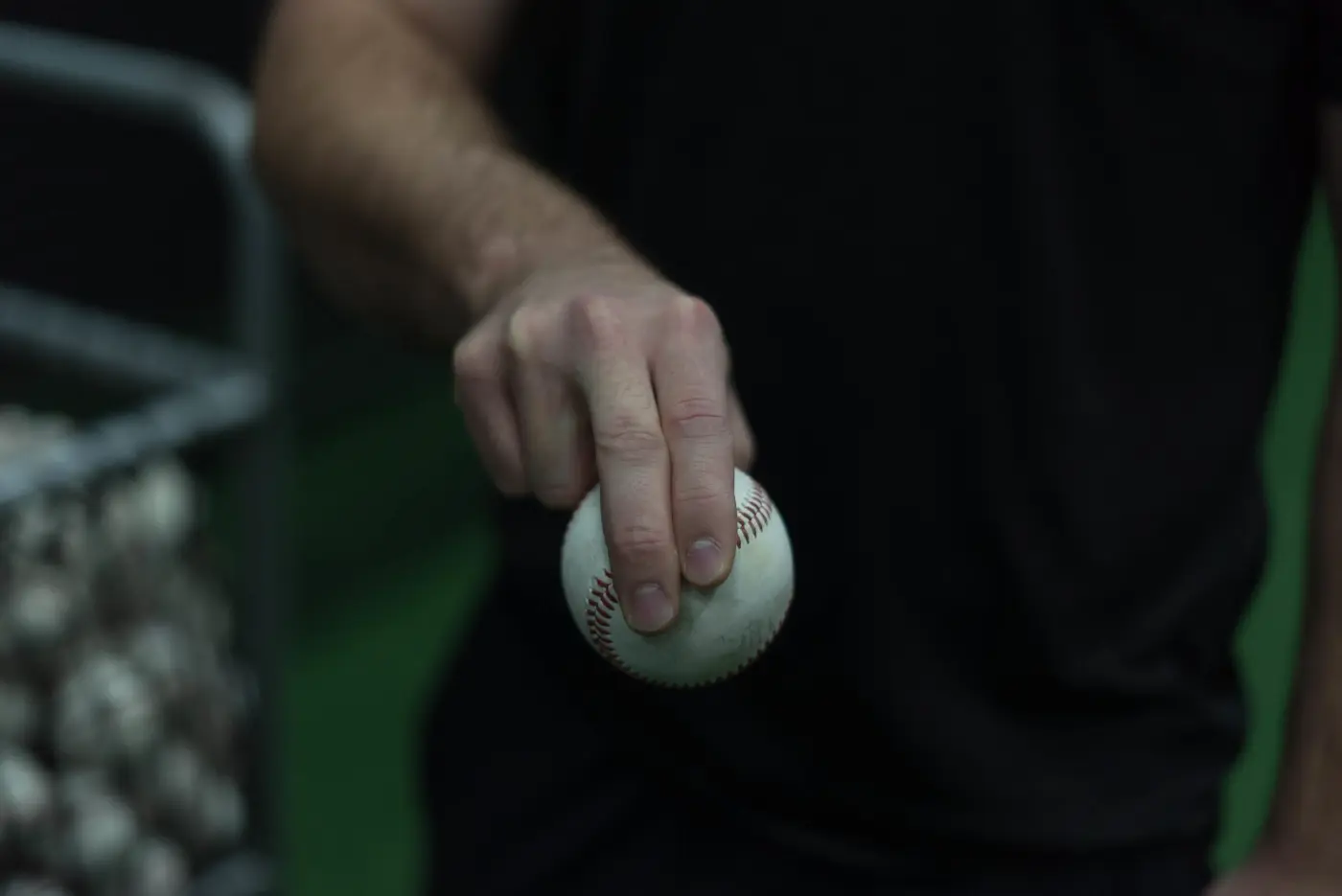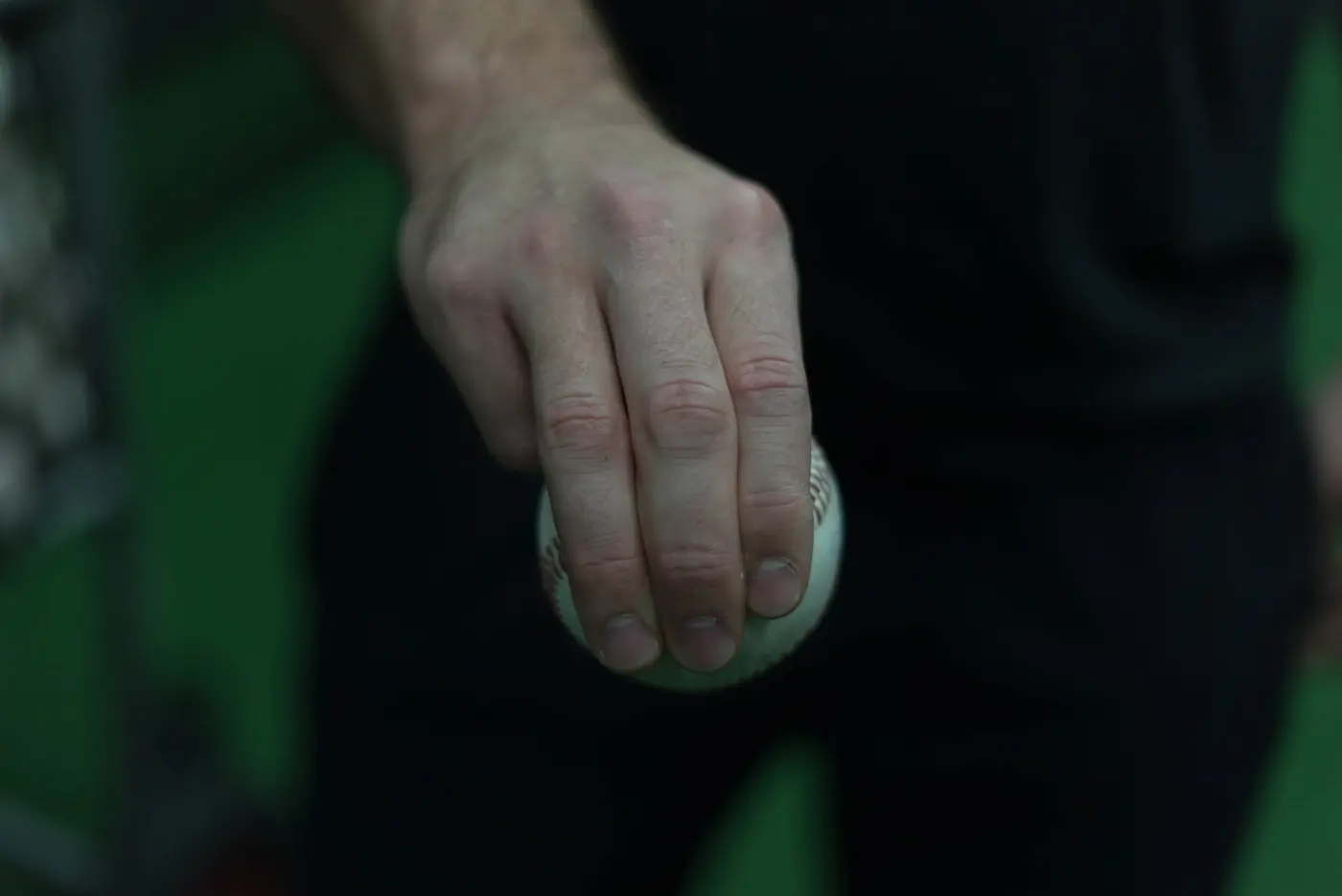Pitch Grips and Changing Fastball Spin Rate

We still don’t know much about why pitchers can spin the same pitches differently, and we don’t know that much about ball flight either.
But in working with a variety of pitchers on pitch development, we’ve seen some interesting differences in spin rate with our athletes. Some of these differences are interesting enough that we wanted to see if the changes individual players saw would apply to others.
So, we compared fastball grips and the effects that each grip had on spin rate. The four different grips we looked at included a standard four-seam fastball, a close-grip fastball, a three-finger fastball, and a wide-grip fastball:
To try and standardized the grips, the athletes were all told to align their first knuckle across the horseshoe seam on each grip.
- The standard grip is how athletes usually throw a fastball, just with their first knuckle on the horseshoe seam.

- The close-grip fastball means the pitcher has his index and middle finger touching on top of the baseball.

- The three-finger grip means the pitcher’s index, middle, and ring fingers are touching on top of the baseball.

- For the wide-grip fastball, the pitchers use baseballs that had dots marked approximately two inches apart on the horseshoe. For the comparison, the pitchers were told to hold the baseball so they could just see the dots on the inside of their fingers.

Each pitcher threw five times with each grip, in the order of regular grip, close grip, three-finger grip, and wide grip. They were also instructed to have their thumb position consistent throughout the different grips.
Because we’ve seen that fastball spin rate scales linearly with velocity, we asked our athletes to throw between 75-80 mph, meaning we used Spin to Velocity Ratio to compare the differences in spin rate.
Below is the data from a previous post suggesting fastball spin rate scales linearly with velocity.
The Results
Here are the numbers we found.

The data can be found here.
These are some pretty interesting numbers, suggesting that grip may play some role in fastball spin rate.
In our original piece on SVR, we said that the MLB league average for a four-seam fastball was 23.9, which, for simplicity sake, we say is 24. Even with a small sample, we see the regular grip was at 24.04 and the close-finger grip was 24.06.
Both are nearly right at the average SVR, suggesting that moving your fingers together doesn’t do much to affect spin rate.
The two biggest differences we see are with the three-finger grip and the wide-split grip.
This counterintuitively suggests that both adding more contact, by an extra finger on top, and using less contact, by spreading the fingers really wide, reduces spin rate.
How can this happen? Unfortunately, we don’t really know because we don’t know all the reasons for why spin rate occurs, but it appears that grip can play a role in fastball spin rate.
Individual Differences
This was a small sample so it’s worth the time to look at each athlete individually. Even though we saw trends as a whole, it’s important to remember that individual athletes can see big differences as outliers.

We can see that two athletes did actually have an increase in spin rate with a close-finger grip, though one was only by 0.1 SVR, the other by 0.8. This could mean that pitching with a close finger grip is worth experimenting with for the athlete who saw an increase in 0.8 but not the others.
While one athlete had a higher SVR on his split grip than his three-finger grip (by 0.2 SVR), two athletes had pretty drastic differences between the wide-split grip and their four-seam fastball. Every athlete’s three-finger and wide-split grip was lower than their regular fastball grip.
Looking at this, we have to mention hand size. The athletes who had the lowest SVR on the wide-split grip also had the smallest hands of the group. Those two were also the most uncomfortable throwing the wide grip because they felt like they couldn’t control it well.
Hypothesizing Reasons Why the Spin Changed
With the three-finger grip, we know that many athletes add more fingers to the top of the ball when throwing a changeup. So this would anecdotally make sense that some sort of added contact changes how the ball rolls off the fingers as a pitch is thrown. But the why for how that happens is still unknown.
For the wide-split grip, we can look at statcast data to see that split-finger fastballs spin less when compared to a pitcher’s fastballs. We wouldn’t say that the athletes in this study were throwing splitters or forkballs, but this data suggests that after a certain point as fingers get further apart spin rate starts to decrease.
It is also possible that differences in hand size causes the same grip to have different effects, individual to each athlete.
All of these grips were novel to the pitchers, so we aren’t sure how the spin rate would change if they practiced throwing these different grips at high intensity over a period of time.
The feedback loop of how spin rate changes probably isn’t just how the grip affects the spin but also how the athlete feels with a grip. So it’s possible that the novelty of the grip caused other small changes in the hand or wrist action.
Pitch Grips and Feedback Loops
Pitching and pitch grips is often thought of a one way feedback loop; the grip changes the spin causing a different pitch. However, these numbers hint at the idea that hand size matters & an athlete’s feel for the grip matters.
Remember, we’ve seen in the study, Baseball Spin and Pitchers Performance (Open Access), that spin rate occurs in a incredibly short period of time.

This could mean that for learning new pitches, it isn’t just about learning a new grip. It’s testing out a grip, seeing how comfortable it feels, and then possibly changing wrist and hand position.
For example, a cutter grip usually isn’t too different from a fastball grip, but the wrist and hand action are different. But if a pitcher slightly changes his grip how much of the movement is coming from the grip and how much is coming from a different feel and hand motion? We don’t know.
This makes sense if you think of a pitcher who throws a really good offspeed pitch—say he has a great slider. His slider movement is probably going to change if you change the grip not only because a different seam orientation might change the ball flight but also if he finds the grip uncomfortable or more comfortable. There are probably small changes that we don’t see in wrist or hand movement or finger pressure that also change ball flight depending on how a grip feels to an athlete.
This would mean that classic “pitch grips” truly aren’t one size fits all. What you are really looking for is a range of grips that can be used for a pitch and then have the athlete work through each to see which feels comfortable and which produces the desired movement.
What this information should do is encourage more experimentation. We don’t know exactly why these changes occurred, but it is worth it for a player to experiment with these and other grips as it pays to be an outlier.
This article was written by Research Associate Michael O’Connell
Check out what else we know about everything spin rate / pitch design here.
Comment section
Add a Comment
You must be logged in to post a comment.
Coach Lippert -
Great stuff as always guys, thank you! Did you monitor any the effect and change the grips had on spin efficiency? I am experimenting and trying to figure out how FB grip can improve spin efficiency for some pitchers.
Thanks!